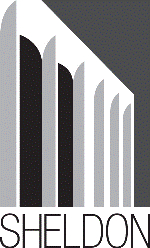Fine and Performing Arts, Hixson-Lied College of

Sheldon Museum of Art: Catalogs and Publications
Date of this Version
1977
Citation
The Nebraska Arts Council, Sheldon Memorial Art Gallery, University of Nebraska- Lincoln, (1977).
Abstract
INTRODUCTION
In the 1930's when Regionalism was the dominate style in American art, Aaron Pyle studied with one of its leading exponents, Thomas Hart Benton. From Benton he learned a method, a philosophy and a style. Aaron Pyle began each of his paintings with a series of sketches, preliminary drawings and grisaille studies. The first ideas were drawn in small thumbnail sketches less than two inches square. Second, were larger outline drawings on a grid for enlarging. Third, were tracings which were transferred to illustration board in preparation for a monochrome painting, which was the fourth step in the evolution of a painting. The monochrome was made to establish major light and dark areas and as a check on the design of the composition. This method seems to imply that the artist feared color, and early in his career, Pyle did paint a number of finished pictures in grisaille, e.g. THE BLACKSMITH (catalogue no. 10) and PICKING CORN (catalogue no. 7). However, there is evidence to indicate that he thought about color, because there are index card size paintings in full color which belong to the series of pencil drawings and black and white studies that were made for each painting. Furthermore, it appears that Pyle also executed lithographs of most of his major works.
Egg temera was Aaron Pyle's chosen medium for finished works. Often called a difficult and time consuming technique, one of its chief virtues is its quick drying properties. This, along with it insolubility and capacity to adhere to any surface, render it desirable to many artists. In fact it was the chief artist's medium of the middle ages. Also, it is transparent, has a smooth surface and a soft brush stroke, which are qualities Pyle liked since his painting method was not one dependent on "in painting" and smooth tonalities, but was rather one based on glazing or overpainting. While it is possible to glaze with oil, it is somewhat difficult because oil dries slowly, and the artist cannot apply the next thin, transparent film of color immediately. Thus, egg tempera suited Pyle's style and temperament.
His careful establishment of all elements in a painting prior to the final picture is an old procedure which now-a-days is usually used only by art students. And in a sense Aaron Pyle was a student all of his life. He followed Thomas Hart Benton's philosophy of painting American life and agrarian subjects in particular. Benton, a thoroughly urban person, drew his inspiration from a life in which he had little first hand experience. His knowledge of rural life was based on observations made on summer walking trips, motor journeys and memories of a childhood spent in southern Missouri. Pyle, actually was a farmer, a working farmer, who painted only when the chores were done, and the subjects he chose were closely related to his life on the farm. In other words, he followed and believed what his mentor stated were the virtues of rural life and their relation to true artistic expression. The ancient myth on which Benton based his philosophy teaches that life in the city is evil, life in the country is good.
Aside from acquiring a method of work and an aesthetic, Pyle also derived a style and palette from Benton. Benton's style was based on the baroque rhythms of Michaelangelo's BATTLE OF THE CENTAURS. Aaron Pyle's style, which is close to Benton's, however, has forms that are less convoluted and compositions containing fewer elements. In other words, Pyle simplified the Benton style and kept the Benton palette.
After the grey pictures of the early forties, cited above, Pyle's paintings became more colorful; they were based on the three primaries: red, yellow and blue. But the paintings were not bright, because the colors were greyed. That is, a small amount of a color's compliment was mixed with the color to lower its intensity and brightness. Exceptions to his usual color scheme are paintings for the Omaha World-Herald. These are blond, they lack strong light and strong darks and contrasting colors. All the colors are bleached and of the same intensity. This was done on purpose as an accommodation to the color reproduction process that the newspaper used for its magazine covers.

